By Danielle Goldfarb and Emily Kuzan
Data are current as of March 27, 2020 at 16:30 Eastern Daylight Time (EDT).
Public health officials tell us that critical to flattening the curve is the need for all of us to minimize physical contact with others. But it is not clear that policymakers around the world have timely, reliable, daily data on compliance and how it’s changing.
RIWI data show that most of us are doing the right thing. But there are an alarming number of citizens around the world still not taking the distancing message seriously. The data also show that women are taking it more seriously than men, and older people more seriously than younger ones. Here is some of what we see so far.
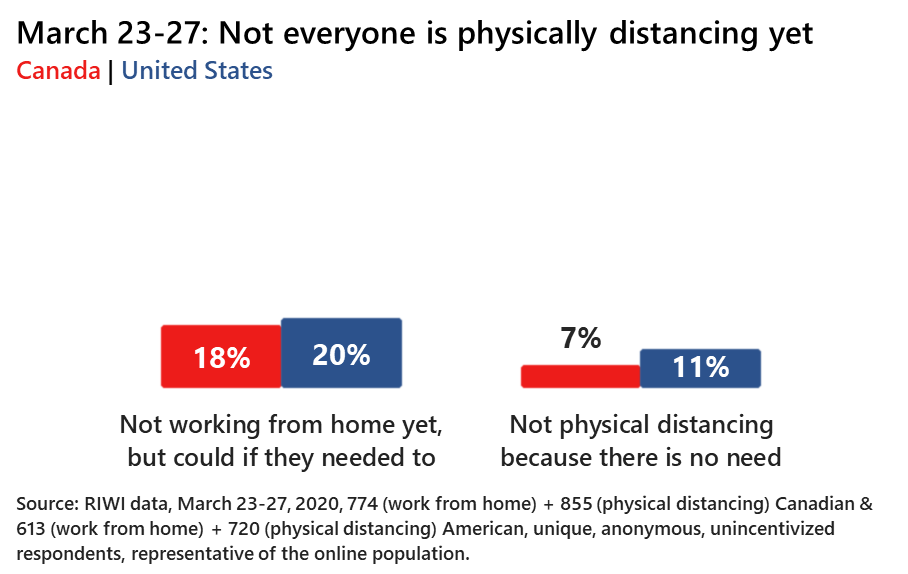
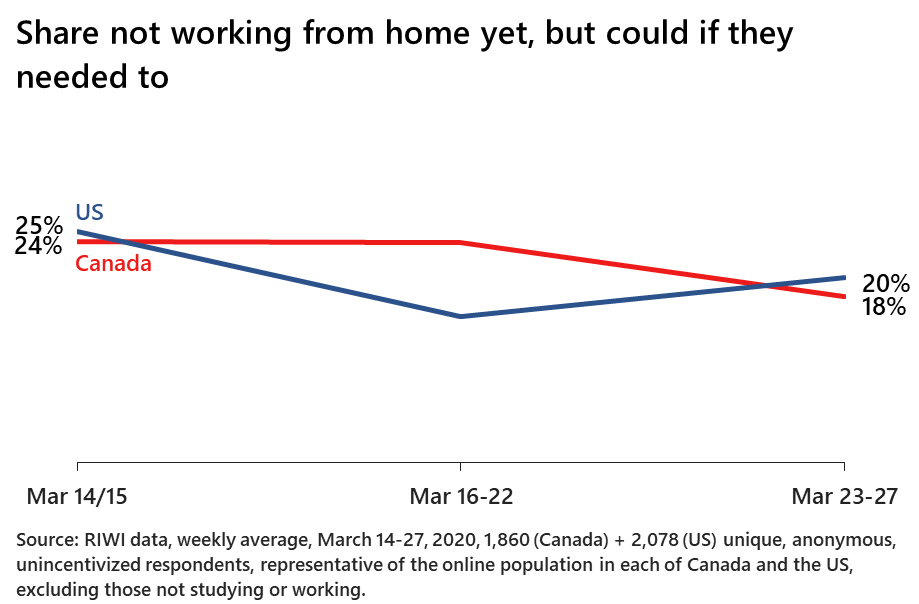
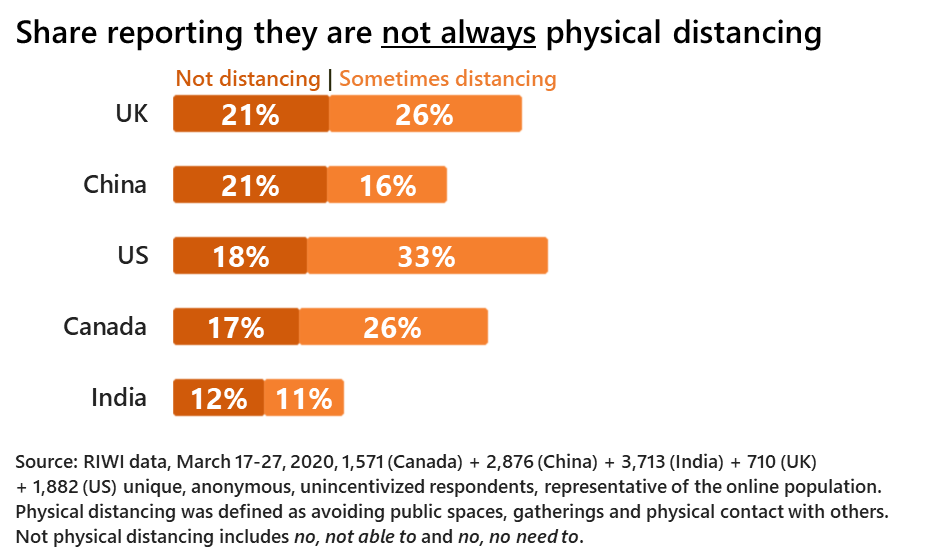
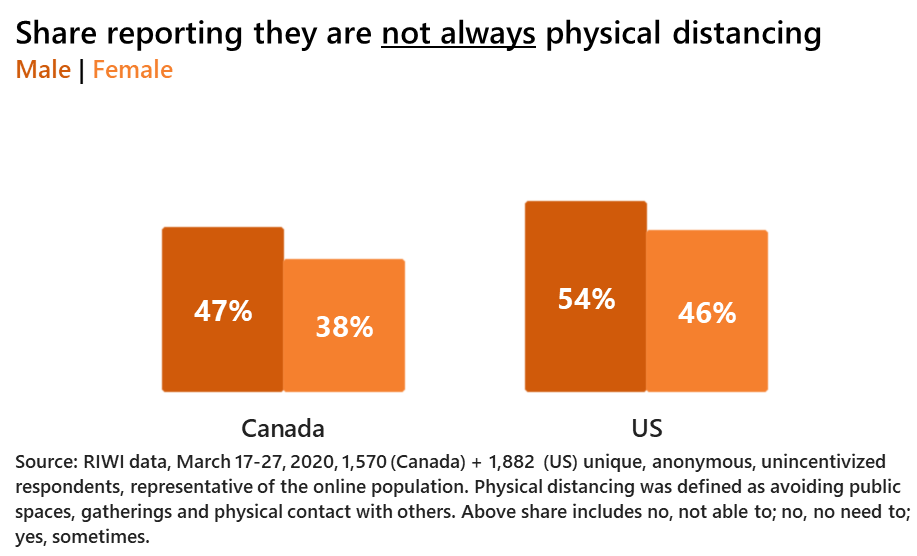
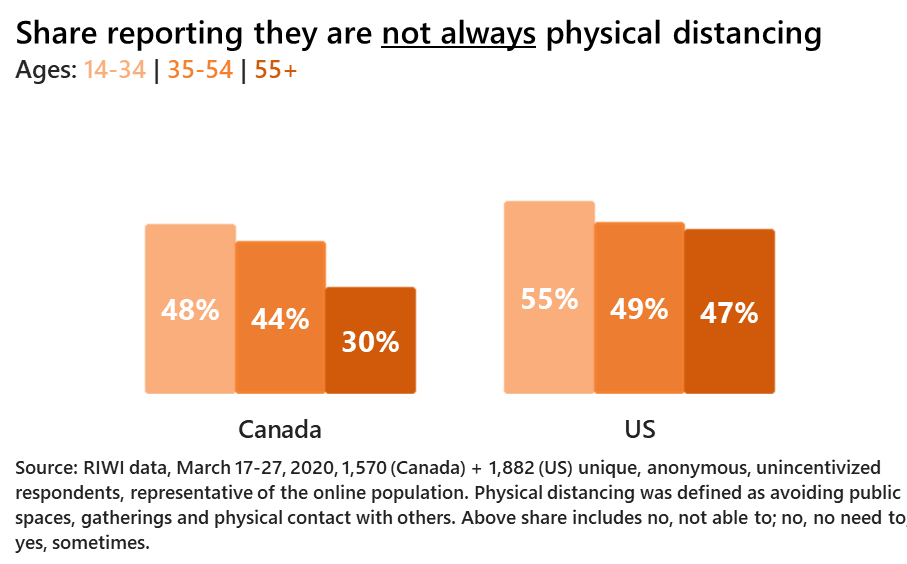
RIWI data includes previously unheard from populations
RIWI collects data using machine-learning technology that randomly engages respondents from the Web-using population. As a result of this method, the RIWI data are broad-based, come from across all regions (rural and urban), and draw daily from non-habitual survey respondents. For example, more than 70 percent of RIWI survey-takers in China and more than 60 percent of RIWI survey-takers in the US have not taken a survey of any other kind in the prior month. RIWI surveys are anonymous, continuous, random and do not collect personally identifiable information.
During an epidemic, hearing from the broadest set of voices possible is vital to get the full picture of who is complying with public health directives. Data that only includes typical survey respondents could, for example, result in missing pockets where people are not heeding public health messages with sufficient intensity, in turn mistargeting public health messaging and thwarting efforts to contain the outbreak.
Related RIWI Research
Virtual lecture: How is the public responding to COVID-19?
Chinese vs. American Confidence in COVID-19 Response Measures
Hearing from all voices during COVID-19
